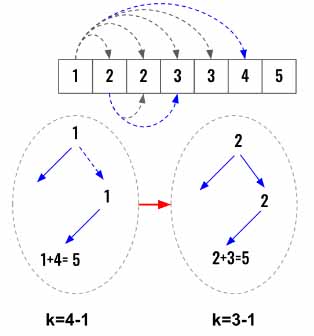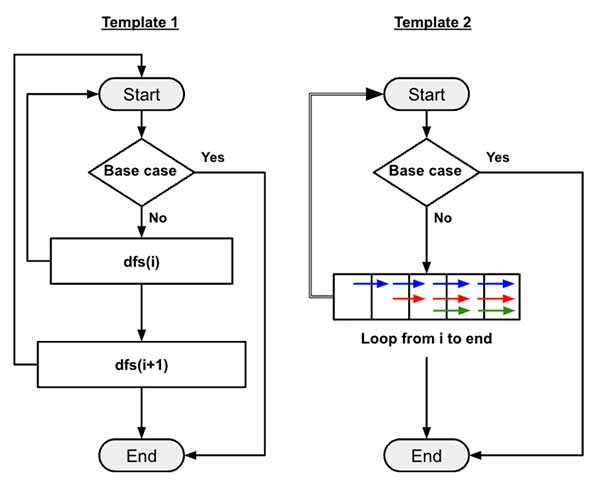Backtracking - Combinations
All diagrams presented herein are original creations, meticulously designed to enhance comprehension and recall. Crafting these aids required considerable effort, and I kindly request attribution if this content is reused elsewhere.
Difficulty : Easy
DFS, Backtracking
Problem
Given two integers n and k, return all possible combinations of k numbers chosen from the range [1, n].
You may return the answer in any order.
Example 1:
1
2
3
4
Input: n = 4, k = 2
Output: [[1,2],[1,3],[1,4],[2,3],[2,4],[3,4]]
Explanation: There are 4 choose 2 = 6 total combinations.
Note that combinations are unordered, i.e., [1,2] and [2,1] are considered to be the same combination.
Example 2:
1
2
3
Input: n = 1, k = 1
Output: [[1]]
Explanation: There is 1 choose 1 = 1 total combination.
Solution
The problem is very similar to Combination Sum II however the difference is that we need to find k equal number of combinations and not less. Also in Combination Sum II, we can use one number again in a different combination, but here one number can only be used only once.
So this tells us that,
We need to keep track of which number is already used and not to use that again (unless we backtrack). In the Combination Sum I & II, we had to keep track of the
pathonly for one combination. However here it needs to be persisted across all traversals.1
used=[False] * len(nums)
Once we identify a solution
path_sum==target, we need to rundfs()again by decrementingk. Then whenk==0, we can returnTrue1 2 3 4 5 6
def dfs(index, path_sum, k): if k == 0: return True if path_sum==target: return dfs(0,0, k-1)
As we discuss in detail, this problem has similarities to the N-Queens problem as well.
Now, here also we will implement using template 2 that we have already discussed here.
The first thing to do is to find the target. Also define the used array for keeping track of the used numbers.
1
2
target = sum(nums) //k
used=[False] * len(nums)
As discussed earlier, the dfs() will take three arguments, index, path_sum & k. Also define the conditions we have created earlier.
1
2
3
4
5
6
def dfs(index, path_sum, k):
if k == 0:
return True
if path_sum==target:
return dfs(0,0, k-1)
Now as per the template 2, we will use a for loop till end of the nums array from current index. We have the condition to make sure current number is not used and the path_sum+nums[j] <= target. Then set the used[j]=True, run the dfs() function.
If the dfs() returns True, return True immediately. The dfs() will return True only if if k == 0 and this will be True only if dfs(0,0, k-1) runs k-1 times.
Finally backtrack by setting used[j]=False
1
2
3
4
5
6
7
8
9
for j in range(index, len(nums)):
if not used[j] and path_sum+nums[j] <= target:
used[j]=True
if dfs(j+1,path_sum+nums[j],k):
return True
used[j]=False
return False
Finally, just invoke & return dfs() .
Final Code
Here is the full code.
1
2
3
4
5
6
7
8
9
10
11
12
13
14
15
16
17
18
19
20
def can_partition_k_subsets(nums, k):
target = sum(nums) //k
used=[False] * len(nums)
def dfs(index, path_sum, k):
if k == 0:
return True
if path_sum==target:
return dfs(0,0, k-1)
for j in range(index, len(nums)):
if used[j]==False and path_sum+nums[j] <= target:
used[j]=True
if dfs(j,path_sum+nums[j],k):
return True
used[j]=False
return False
return dfs(0,0,k)

